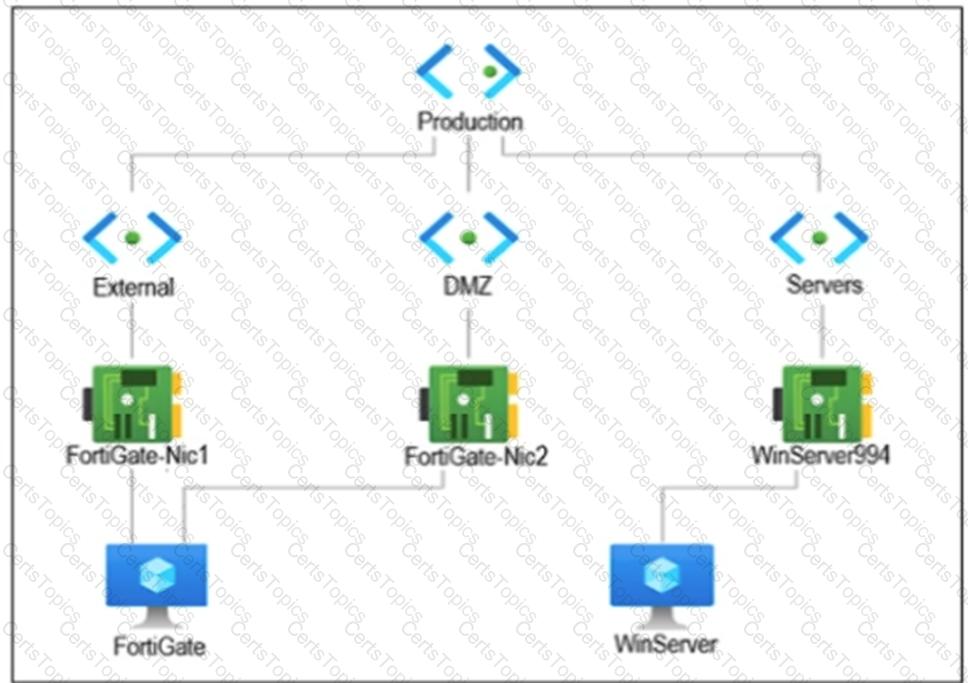Refer to the exhibit.

You are troubleshooting a network connectivity issue between two VMs that are deployed in Azure.
One VM is a FortiGate that has one interface in the DMZ subnet, which is in the Production VNet. The other VM is a Windows Server in the Servers subnet, which is also in the Production VNet. You cannot ping the Windows Server from the FortiGate VM.
What is the reason for this?
After integrating a FortiGate VM with Azure Route Server, you detect that routes are not propagating successfully.
What initial step could you perform to diagnose the root cause?
Refer to the exhibit.

Your company runs front-end web servers in Azure. You need to deploy a Linux VM to be used as a web server.
To protect your web servers with a web application firewall (WAF), you deploy FortiWeb to secure applications from web-based attacks.
Which FortiWeb operation mode can you implement for this scenario?
In the context of Azure Route Server, what is a primary function of the route server subnet?